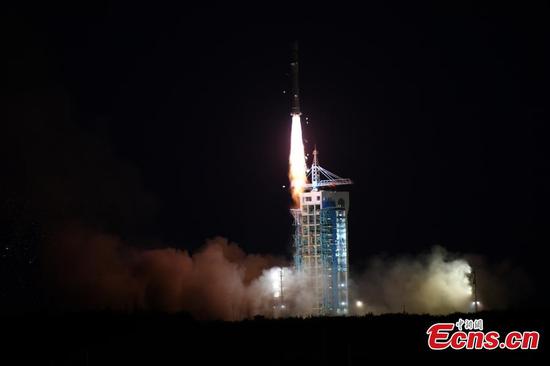American researchers developed and flew the first-ever plane with no moving parts like propellers, turbines or fans which are powered by the combustion of fossil fuels or by battery packs.
The study published on Thursday in the journal Nature described the light aircraft powered by "ionic wind," a silent but mighty flow of ions that could generate enough thrust to propel the plane over a sustained, steady flight.
"This has potentially opened new and unexplored possibilities for aircraft which are quieter, mechanically simpler, and do not emit combustion emissions," said Steven Barrett, associate professor of aeronautics and astronautics at Massachusetts Institute of Technology (MIT).
The researchers expected to develop the ion wind powered drones in the near term and to pair the ion propulsion with conventional combustion system to create more fuel-efficient passenger planes in the future.
The ionic wind, also known as electroaerodynamic thrust, is a physical principle that was first identified in the 1920s.
It describes a wind that can be produced when a current is passed between a thin and a thick electrode. If enough voltage is applied, the air in between the electrodes can produce enough thrust to propel a small aircraft.
People assumed that it would be impossible to produce enough ionic wind to propel a larger aircraft over a sustained flight, according to Barrett.
His team produced a large glider weighing about five pounds or 2.27 kilograms and having a five-meter wingspan. The aircraft carries an array of thin wires strung along and beneath the front end of the plane's wing.
The wires are used as positively charged electrodes and similarly arranged thicker wires, running along the back end of the plane's wing, serve as negative electrodes, according to the study.
The fuselage of the plane has a stack of lithium-polymer batteries and a power supply that can convert the batteries' output to a sufficiently high voltage (40,000 volts) to propel the plane.
The researchers flew the plane a distance of 60 meters across a gymnasium and found the plane produced enough ionic thrust to sustain flight the entire time.
Barrett's team is working on producing more ionic wind with less voltage and increasing the design's thrust density. Enditem


















































